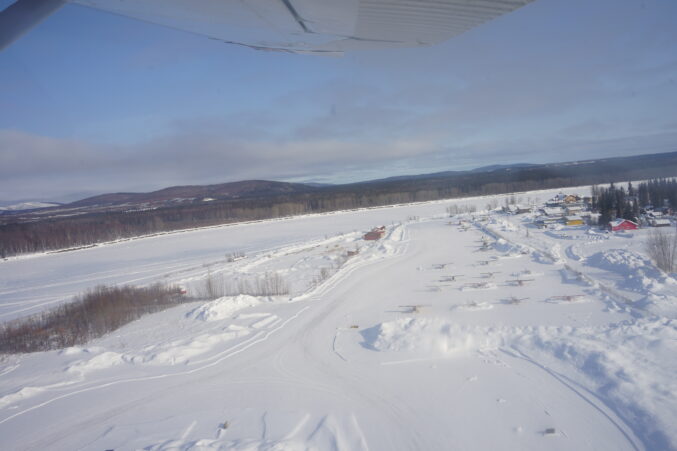
The view of McGrath checkpoint from above! Photo Credit: J.Westrich
When I returned home from the 2023 Iditarod multiple people asked, “What surprised you the most about your time in Alaska?” I know they expected comments about the cold, or the wildlife, or the dog teams. My actual answer isn’t flashy or shocking. The biggest surprise was the vastness of the remote Alaskan wilderness. Imagine my surprise to discover that, regardless of how much I “thought” I knew about the size and scope of the largest US state, I had no real understanding until I was in a small plane over the interior. It was “you’ve got to see it to believe it” in the truest sense. Sadly, this newfound knowledge won’t help readers learn more about Alaska because telling you that Alaska is huge (12 times the size of New York State) or remote (more people live in my Western New York county than in the entire state of AK) won’t fully describe the vastness. Seeing it in person changed my whole perspective.
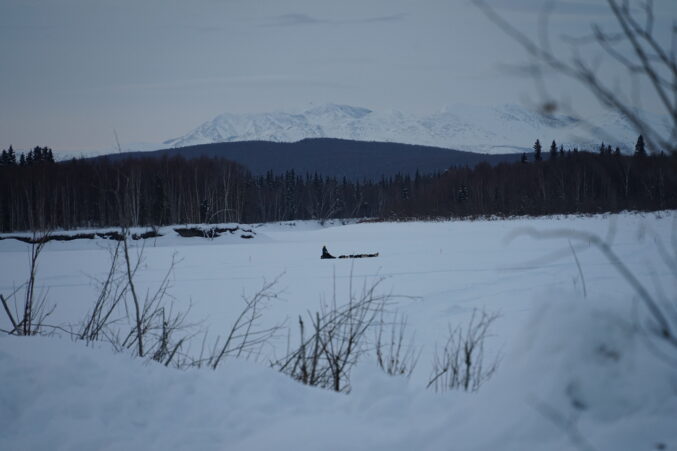
Musher heading back onto the river after leaving McGrath checkpoint. Photo Credit: J.Westrich
For me the most fascinating view from the sky was of the rivers. These frozen waterways wind and twist across the landscape, meandering until a glimpse of a tiny village appears on the bank. Rivers are the heart of the village communities; settlements established for the proximity to fresh water, food sources, and travel (by boat in summer or dogsled/snow machine over the frozen river in winter). Without roads to mar the landscape it is shockingly clear that the rivers are the highways of interior Alaska. The Iditarod mushers followed them to the villages, coming in off the rivers, into the checkpoint, and returning to the waterway to continue their journey.
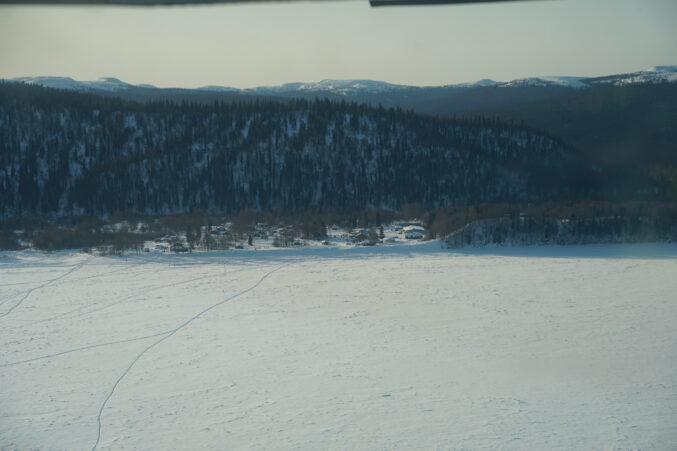
Grayling, on the banks of the Yukon River. Photo Credit: J.Westrich
What makes this even more fascinating is the contrast between the “shortest” route and the “fastest” route. Those of us that use navigation tools like Waze or Google Maps know that there is a distinct difference between a longer highway route and a shorter trek littered with stop lights, strip mall traffic, or the potential to get stuck behind a school bus or garbage truck! While Iditarod mushers might not face these exact issues, the rivers, while winding and twisting, are smooth and less hazardous than a more direct overland trip. This month’s lesson incorporates Iditarod, Math, and Earth Science to investigate distances. Discover the lesson HERE.
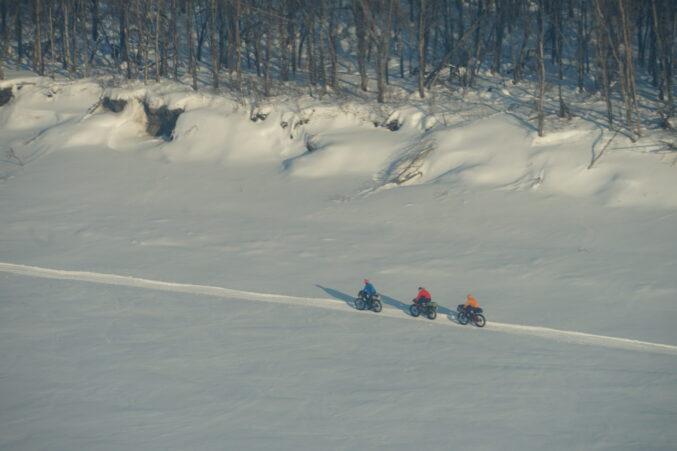
Cyclists tackling the Iditarod Trail Invitational on the Yukon River. Photo Credit: J.Westrich
During my time in Alaska I traversed the rivers by snowmachine and on foot. I watched planes land on the rivers and saw Iditarod Trail Invitational cyclists cruise past.The rivers brought many, many mushers to Nome. I may have underestimated the scope of interior Alaska, and it was humbling to realize I’d overlooked the essential nature of rivers, yet this misconception was also a blessing. One of the greatest gifts of my time as 2023 Iditarod Teacher on the Trail was the realization that there is a very, very great big world out there that you have to see to believe; and I should take every opportunity to get my head out of a book and see it for myself.
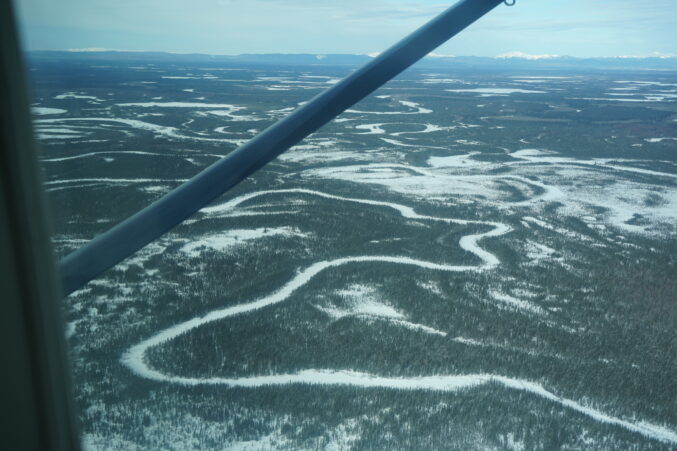
Where will this winding river lead? Photo Credit: J.Westrich
Library Learnings: Bear Came Along is a hilarious and entertaining picture book about a domino effect of forest animals joining together on a trip down river…with unexpected results. We all know rivers wind and around the next bend something might pop up we aren’t prepared for – kind of like life – but how we choose to see this surprise situation makes all the difference! Great to introduce students to the importance of a positive perspective – and the fact that, no matter how different we are from each other, together we either sink or learn to swim!


